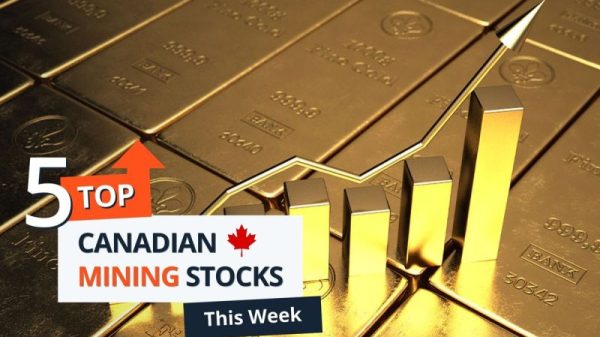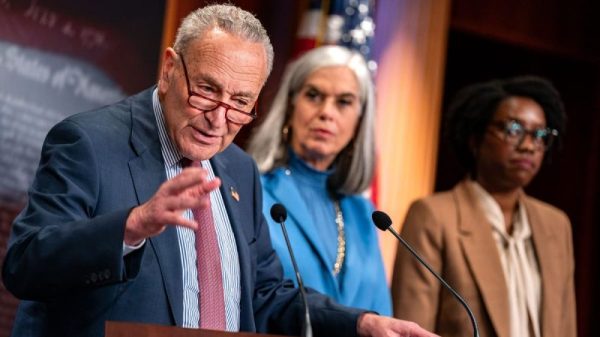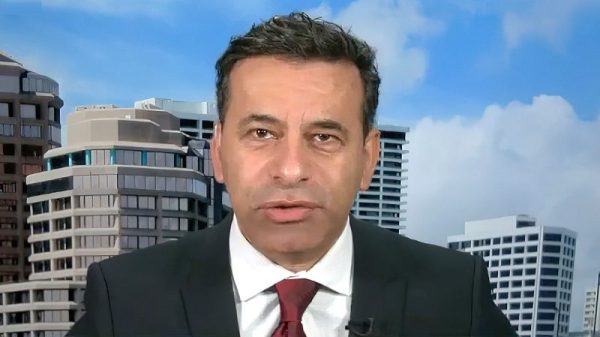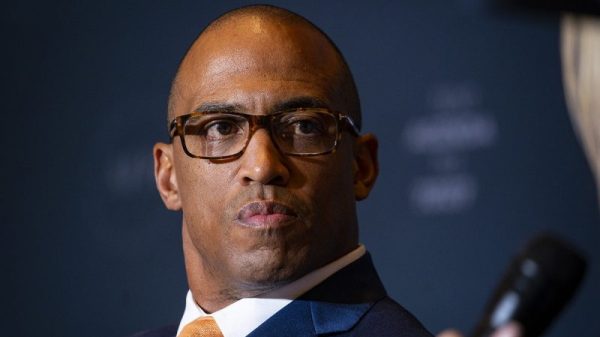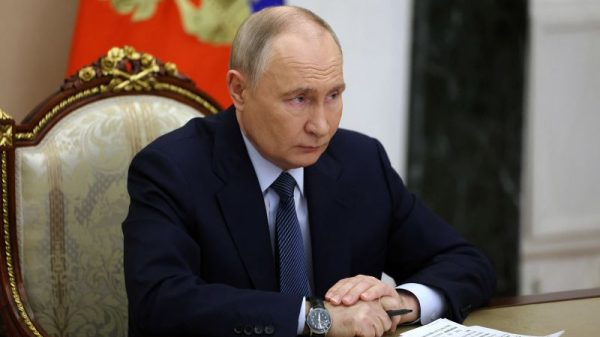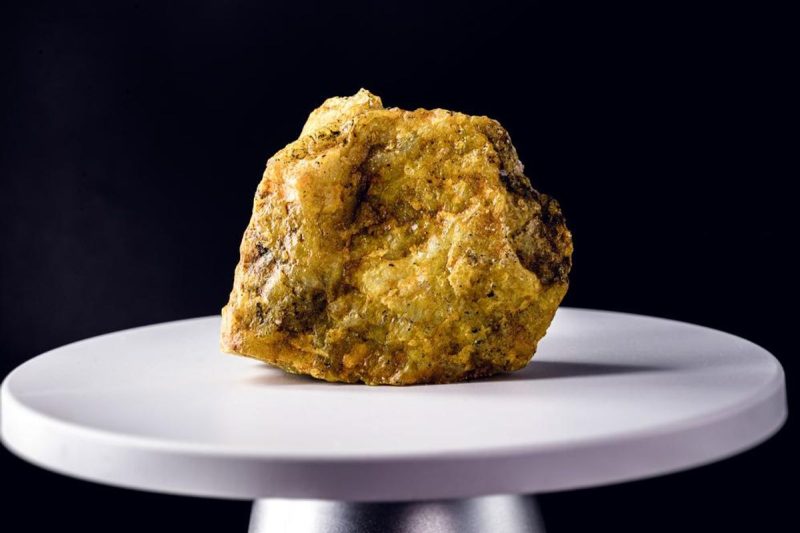Uranium is an important commodity in the energy sector, and knowing the countries with the top uranium reserves is key.
Mined uranium resources have provided fuel for nuclear power generation for more than 60 years, and today nuclear power serves 10 percent of global energy needs. Global uranium demand is anticipated to grow in the coming years, which bodes well for future uranium prices. According to the World Nuclear Association (WNA), around 60 nuclear reactors are under construction worldwide, and significant increases to capacity at existing plants are also planned.
Global uranium production totaled 57,651 metric tons (MT) of U3O8 in 2022, the latest year for which numbers are available. The five top uranium-producing countries in the world are Kazakhstan, Canada, Namibia, Australia and Uzbekistan, and they were responsible for the vast majority of that production.
1. Australia
Uranium resources: 1,684,100 metric tons (28 percent of world uranium resources)
Which country has the most uranium? While Australia ranks fourth in global uranium production, it takes the lead for the highest uranium reserves in the world.
Australia’s crown jewel is Olympic Dam, the largest-known single deposit of uranium in the world with proven and probable reserves of 588 million MT at an average grade of 590 grams per MT (g/t) uranium in-situ. The mine is owned by BHP (ASX:BHP,NYSE:BHP,LSE:BHP) and produces uranium as a byproduct.
Other major uranium deposits in the country include Ranger, Beverley and Four Mile. While the latter two are owned by a private company, Ranger is owned by Energy Resources of Australia (ASX:ERA,OTC Pink:EGRAF), in which Rio Tinto (ASX:RIO,NYSE:RIO,LSE:RIO) has a majority interest. However, production at Ranger was brought to a halt in early 2021 and the site is now being rehabilitated.
Australia is key to the global uranium industry, but mining the material is politically contentious in the country. For example, the Western Australian government has put the brakes on any new domestic uranium-mining project approvals, although it is allowing existing projects to go ahead. In addition, the federal government is opposed to nuclear energy.
In July, the Australian Government put the kibosh on Energy Resources of Australia’s attempt to renew its licence permit for the Jabiluka uranium project in the Northern Territory in response to community backlash.
2. Kazakhstan
Uranium resources: 815,200 metric tons (13 percent of world uranium resources)
Kazakhstan comes in second in terms of uranium resources, but ranks first in uranium production. The country’s national uranium-mining company, Kazatomprom (LSE:KAP,OTC Pink:NATKY), is the world’s largest uranium producer. Kazatomprom’s Inkai uranium mine, a 60/40 joint venture with Canada’s Cameco( TSX:CCO,NYSE:CCJ), hosts proven and probable reserves of 261.7 million pounds of uranium contained in 305.6 million MT of ore grading 0.04 percent.
At least 67 percent of Kazakhstan’s electricity production comes from coal, with the remainder supplied by natural gas (22 percent), hydro (9 percent) and solar and wind (1.5 percent). However, the country’s energy development plan details changes to the mix that would include 5 percent of electricity generation from nuclear power and 10 percent from renewable energy by 2030. Kazakhstan has two proposed and planned nuclear power plants.
Russia’s war in Ukraine has created a significant roadblock for Kazakhstan’s uranium exports to western markets. Sanctions imposed on Russia have made the cost-effective route via St Petersburg no longer a viable option for transport.
Another issues facing Kazakhstan’s uranium mining sector is supply shortages of sulphuric acid, which is used during in-situ leaching to dissolve uranium from host rock. This challenge, coupled with construction delays at new projects, led Kazatomprom to cut its production targets for 2025 by 17 percent.
3. Canada
Uranium resources: 588,500 metric tons (10 percent of world uranium resources)
The second largest uranium producer, Canada is third largest in terms of top uranium countries by reserves. Saskatchewan’s Athabasca Basin is a hotbed for uranium exploration and is known the world over for having the highest-grade uranium deposits on the planet.
The North American nation is home to the world’s top uranium mines: Cameco’s Cigar Lake and McArthur River. Together, they make the province of Saskatchewan an international leader in the uranium sector, although in recent years these operations have spent time offline.
The mines host high-grade deposits, with Cigar Lake’s proven and probable reserves totaling 208.6 million pounds of uranium from 600,000 MT grading 17.03 percent, and McArthur River’s coming in at 380.5 million pounds of uranium from 2.6 million MT grading 6.72 percent.
Nuclear energy accounts for about 15 percent of Canada’s electricity demand, and its nuclear power infrastructure includes 19 nuclear reactors. As the second largest country by landmass, providing reliable energy to Canada’s many remote regions poses a significant challenge. However, novel reactor technologies, such as small modular reactors, have the potential to supply power to smaller electrical grids or to remote, off-grid areas.
4. Russia
Uranium resources: 480,900 metric tons (8 percent of world uranium resources)
As the largest country by landmass, Russia has a wealth of resources, including 8 percent of the world’s uranium. The majority of Russia’s domestic uranium output comes via Rosatom, a subsidiary of ARMZ Uranium Holding, which owns the Priargunsky underground mine and is developing the Vershinnoye deposit in Southern Siberia.
To meet the nation’s growing energy needs, Russia’s government is keen on increasing its uranium output. According to the WNA, nuclear energy accounted for 19 percent of Russia’s energy mix as of December 2021, the most up-to-date data available. The country has 36 nuclear reactors generating 26,802 megawatts of electricity, with an additional four units under construction.
Russia is among the world’s top 10 uranium producers in addition to holding significant reserves, and the country’s war with Ukraine has raised questions about the extent to which Russia will be able to continue exports. However, European countries such as France are still importing Russian uranium. In 2023, Russia reportedly accounted for 27 percent of all enriched uranium supplied to US nuclear plants. However, in May 2024, US President Joe Biden signed into law a ban on enriched uranium imports from Russia.
In mid-September 2024, Russian President Vladimir Putin said his government is considering limiting uranium exports in response to ongoing sanctions.
5. Namibia
Uranium resources: 470,100 metric tons (8 percent of world uranium resources)
The world’s third largest uranium-producing country, Namibia, comes in fifth for reserves.
The African nation’s Langer Heinrich mine, owned by Paladin Energy (ASX:PDN,OTC Pink:PALAF), and Rössing mine, majority owned by China National Uranium, are capable of producing 10 percent of the world’s uranium output. Langer Heinrich hosts total proven and probable reserves of 83.8 million pounds uranium from 84.8 million MT at a grade of 448 parts per million.
Significant Namibian deposits also include Trekkopje, which is near Rössing and owned by Orano, and the world-class Husab uranium mine, which is also majority owned by China National Uranium. Husab hosts 224.8 million pounds of probable uranium reserves.
The Namibian government is in favor of expanding the country’s uranium-mining industry. While there are no nuclear power plants in Namibia, there is some support for a national nuclear power industry.
Securities Disclosure: I, Melissa Pistilli, hold no direct investment interest in any company mentioned in this article.


